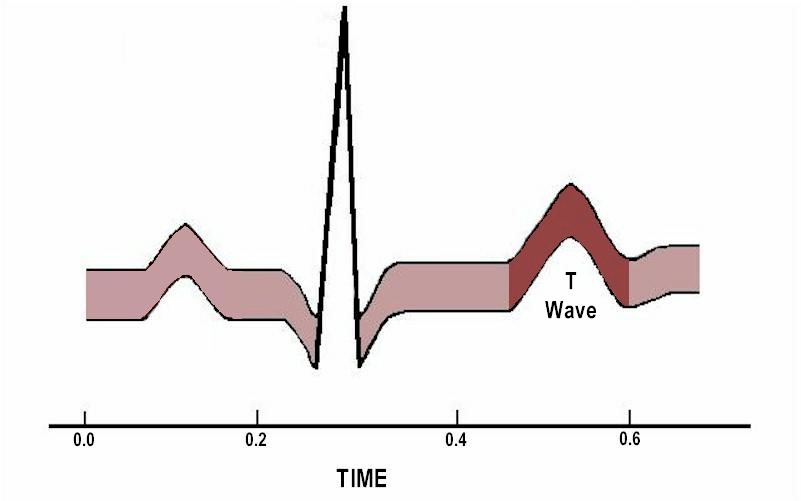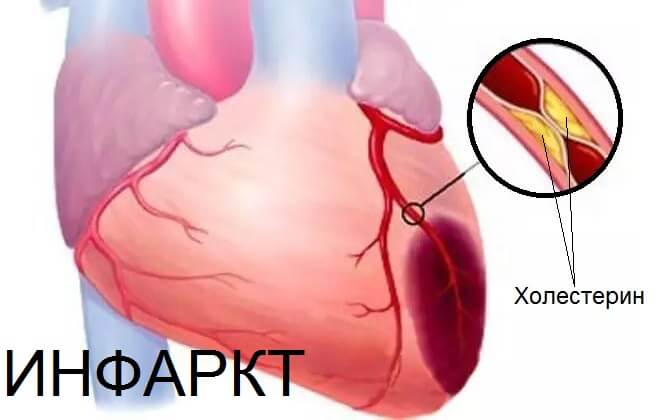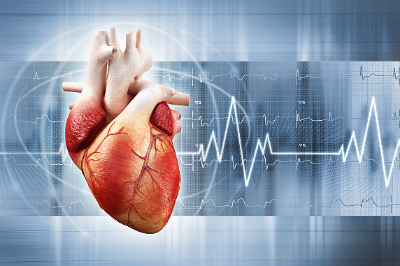Diffuse changes in the myocardium: what is it, the causes and treatment
Author Ольга Кияница
2018-05-18
General characteristics
Diffuse changes in the myocardium are nonspecific, that is, uncharacteristic for a particular disease, processes that affect all the walls of the heart.
This is an ECG-term, that is, it is used only when certain changes are detected on the cardiogram, the clinical significance of which need not be exaggerated.
Such violations can be observed in a healthy person.However, when detecting diffuse changes in the myocardium, it is recommended to consult a therapist who will find out the cause of the detected abnormalities. If necessary, the patient will be referred to the cardiologist.
Diffusive myocardial changes on ECG and Echocardiography
The physician of functional diagnostics gives a conclusion about diffuse changes in the myocardium when the T wave is recorded on the ECG with a reduced amplitude in leads reflecting the electrical activity of different parts of the myocardium.

Diffusive myocardial changes in the background of hypothyroidism: the amplitude of the T wave is decreased in the majority of ECG leads
The cycle of the heart consists of two phases - contraction (systole) and relaxation (diastole). During systole in cells, the myocardium is first excited by the electric impulse (its depolarization occurs), and then returns to its original state.Restoration of electric charge of cardiomyocytes is called repolarization. This process is reflected on the ECG in the form of a T wave.
Tine T is recorded on the ECG after a large QRS complex reflecting depolarization, that is, myocardial arousal.Normally, it is directed upward in all leads except AVR and V 1. In leads from the extremities ( I , II , III , AVR , AVL , AVF), which are recorded at the beginning of the ECG, its value should not exceed 5 mm. In the thoracic leads V 1 - V 6, which are recorded on the second part of the ECG, its height should not be more than 15 mm.

Tine T is recorded after the ventricular complex
Diffuse changes in the myocardium on the ECG are manifested by a violation of the shape of the T wave:
- weakly positive with a low amplitude;
- Smoothed, almost flat;
- slightly negative;
- two-phase.
Such changes are recorded in most leads, which gives reason to speak of them as diffuse, that is, common.
Diffusive changes in the myocardium on Echocardiography show a widespread violation of the contractility of the walls of the heart.
ECG is a more sensitive method in detecting diffuse changes. Therefore, they can be recorded on a cardiogram and absent from an EchoCG study.
Varieties of diffuse changes in the myocardium
There is no strict classification of such changes. Usually, the physician of functional diagnostics describes one of two options:
- moderate with a weakly negative, weakly positive or two-phase T wave;
- expressed with a flattened tooth T on the ECG.
Such a division is conditional, largely depends on the experience and qualifications of the functionalist and does not bear significant information for the diagnosis. The cardiologist can only assume that with pronounced diffuse changes in the heart there is some pathological process. Moderate diffuse changes are observed in healthy people and in cardiac pathology.
The main types of diffuse disruption of the heart according to EchoCG:
- diastolic dysfunction of the left ventricle - impairment, slowing of myocardial relaxation;
- systolic dysfunction of the left ventricle - a more severe condition, a decrease in heart contractility.
Both these conditions are signs of chronic heart failure.
Causes
Diffusive changes in the myocardium can be functional, developing in a healthy person, serve as a manifestation of metabolic disorders or a sign of heart disease.
The main reasons for the functional changes are:
- hyperventilation, that is, increased respiration;
- the use of hot or cold drinks just before the ECG;
- abrupt change in body position;
- emotional changes, for example, anxiety;
- starvation.
Causes associated with metabolic disorders:
- obesity;
- diabetes;
- hypothyroidism - a decrease in the production of thyroid hormones;
- climacteric syndrome;
- hypokalemia - a decrease in the concentration of potassium in the blood for chronic diarrhea, hyperaldosteronism (adrenal pathology), excessive sweating or long-term use of diuretics.

Diffuse changes in the myocardium with a lack of potassium in the blood
Virtually all diseases of the heart can be accompanied by diffuse changes in the myocardium. Among the main reasons can be noted such:
- myocardial dystrophy;
- cardiomyopathy;
- transferred myocarditis;
- cardiac ischemia;
- chronic heart failure;
- sports heart syndrome.
Mechanism of pathology development
Diffusive changes in the myocardium arise for various reasons, but common to them is a violation of the processes of repolarization of the myocardium. During the depolarization, the ions of sodium, potassium and others move through the cell membrane of the cardiomyocyte in such a way that it changes its electrical charge to the opposite one. During the repolarization, the reverse process occurs. If it is slowed down, changes in the T wave are recorded on the ECG, which indicates a diffuse change in the myocardium.
The slowing down of ions through the cell membrane is associated with a disturbed metabolism in the cardiac cell. The main reason for this is the lack of energy, which is mainly caused by oxygen deficiency.
Lack of oxygen in the cells of the myocardium arises under the influence of various causes, considered above. This may be a reflex slowing of the heartbeat, an insufficient content of salts in the blood (first of all, potassium ions), a disturbance in the regulation of energy metabolism in endocrine diseases, a worsening of blood supply in IHD and heart failure, or a relative increase in myocardial muscle mass in sports heart syndrome.
Chronic hypoxia (oxygen deficiency) gradually leads to disturbances in relaxation, and then contractility of the heart muscle, which is reflected in the echocardiography.
Symptoms
Diffuse changes in the myocardium are not a disease. Therefore, they do not cause any characteristic clinical manifestations. The symptomatology is related to the cause that caused such abnormalities on the ECG.
The main features in which diffuse changes in the myocardium can be detected:
- dyspnea with increased physical exertion;
- interruptions in the work of the heart;
- fast fatiguability;
- Stitches, aching long pains in the apex of the heart (near the left nipple) or to the left of the sternum;
- attacks of chest pain arising during exercise and rapidly passing at rest or after taking nitroglycerin.
Methods of treatment
Not all cases of diffuse changes in the myocardium require treatment. Its necessity is determined by the gravity of the cause that caused these deviations.
If there are diffuse changes on the ECG, different methods of treatment are used:
- diet and compliance with the regime;
- treatment of underlying pathology;
- use of drugs that improve metabolism in the heart muscle ("metabolic therapy");
- phytotherapy.
Depending on the underlying disease with diffuse changes in the myocardium, such medications can be prescribed:
| Causes of ECG changes | Medicinal groups |
| Endocrine disorders |
Oral hypoglycemic agents Insulin Thyroid hormones Female sex hormones with menopause Potassium-sparing diuretics |
| Diseases of the heart muscle |
ACE Inhibitors Beta-blockers Metabolic drugs |
| Cardiac ischemia |
Nitrates Beta-blockers Antagonists of calcium channels Antiaggregants |
| Chronic heart failure |
ACE Inhibitors Beta-blockers Diuretics |
Traditional medicine
They can be used for functional disorders as an independent treatment, and for the diagnosed diseases - as an addition to medicines. However, the positive effect of folk recipes for diffuse changes in the myocardium has not been proven.The most popular means:
- broth of dogrose, mint leaves, lemon balm, valerian, motherwort's root, dill seeds, juniper berries;
- wiped berries of a viburnum with honey;
- a mixture of lemon juice, mashed garlic and honey.
Take such funds should be a long time.
Medications
With many diseases accompanied by diffuse changes in the myocardium, so-called metabolic therapy is prescribed. It is supposed (but not proven) that the listed medicines improve the supply of oxygen to the heart, activate the energy metabolism and restore the disrupted cell work:
- meldonium (Angiocarcidyl, Vasomag, Idrinol, Cardionate, Mildronate, Medatern, Melfor);
- taurine (Dibicor, Cardioactive Taurine);
- Inosine (Inosie-F, Inosine, Riboxin);
- orotic acid (potassium orotate);
- Levokarnitin (Carniten, Carnitine, Levocarnil, Elkar);
- cocarboxylase;
- magnesium orotate (Magnerot);
- phosphocreatine (Neoton, Phosphocreatine);
- cytochrome C.
These drugs are available in various forms: tablets, capsules, powders, injectable solutions, which makes it possible to widely use them in the treatment of cardiac diseases.
Diet
The basis of the pathogenesis of diffuse changes in the myocardium is the violation of ion exchange in the heart cells.Therefore, a diet rich in minerals and vitamins is recommended. It must correspond to the energy needs of the body.
Recommended products:
- low-fat dairy products;
- baked fish, low-fat boiled meat, protein omelet;
- oatmeal, buckwheat, multi-cereal porridge;
- dried apricots, bananas and raisins;
- carrots, sweet Bulgarian pepper, peanuts.
Exclude:
- alcoholic beverages and strong coffee;
- salted, smoked and fatty dishes.
Forecasts
Detection of diffuse changes in the myocardium on the ECG does not threaten life. Such violations are also found in healthy people. Therefore, the first thing the doctor recommends is to establish a regime, to sleep enough, to eat right, to give up heavy diets and caffeine. After a month, you can repeat the ECG.
Another way to suggest the functional nature of such changes is the ECG test with potassium chloride. Its positive result (normalization of the T wave after ingestion of potassium chloride solution) does not exclude heart disease, but reduces their probability.
When a disease is detected, the prognosis depends on the severity of the existing heart failure. The most severe symptom is systolic dysfunction of the myocardium according to EchoCG. This is practically an irreversible condition.However, in this case, there are treatment options - from maintaining heart contractility with the help of drugs to mechanical devices that stimulate the pumping activity of the myocardium and organ transplantation.
Diffuse changes in the myocardium - an ECG-sign that appears with many functional disorders or diseases of the heart or the endocrine system. They reflect the violation of ion exchange in the heart cells. The severity of abnormalities can be determined with the help of echocardiography. Treatment depends on the cause of the observed abnormalities.
Similar articles

Today, one of the most common diseases is myocardial infarction, which, depending on the area of involvement of the heart muscle, can be large-focal (large or transmural) and small-focal. Extensive myocardial infarction is dangerous due to its consequences, since with its development in 40% of cases, patients die.

After a heart attack, you can take certain actions to reduce the risk of heart problems. As a rule, after discharge from the hospital, the patient who underwent myocardial infarction is given general recommendations on what can and can not be done. But in everyday life there are often questions that require an immediate response.

Prevention of the development of cardiovascular diseases is done by preventive cardiology. To date, various schemes have been developed to prevent such formidable diseases as myocardial infarction, heart rhythm disturbance, stroke, heart failure. Timely measures taken will prolong life.
